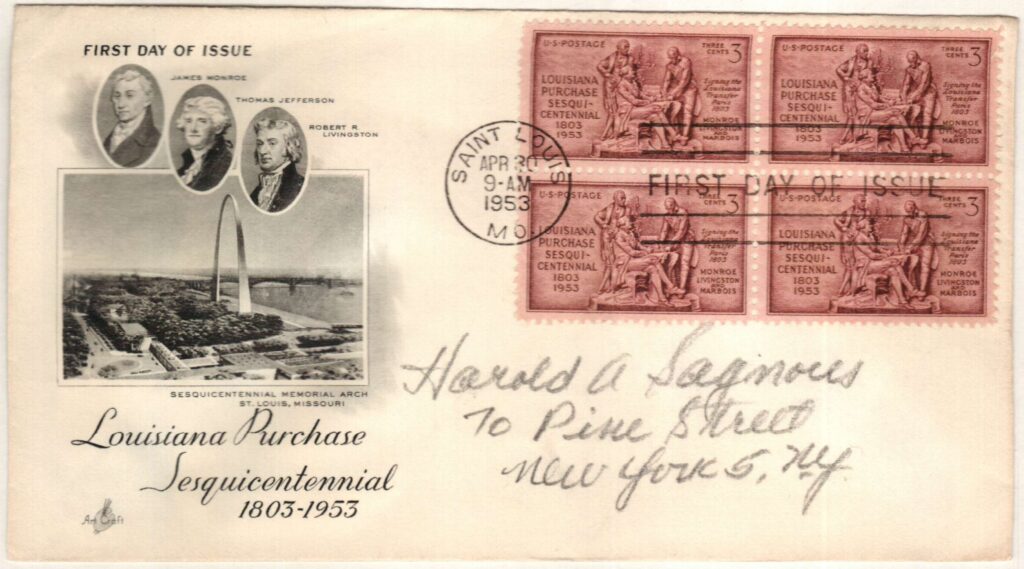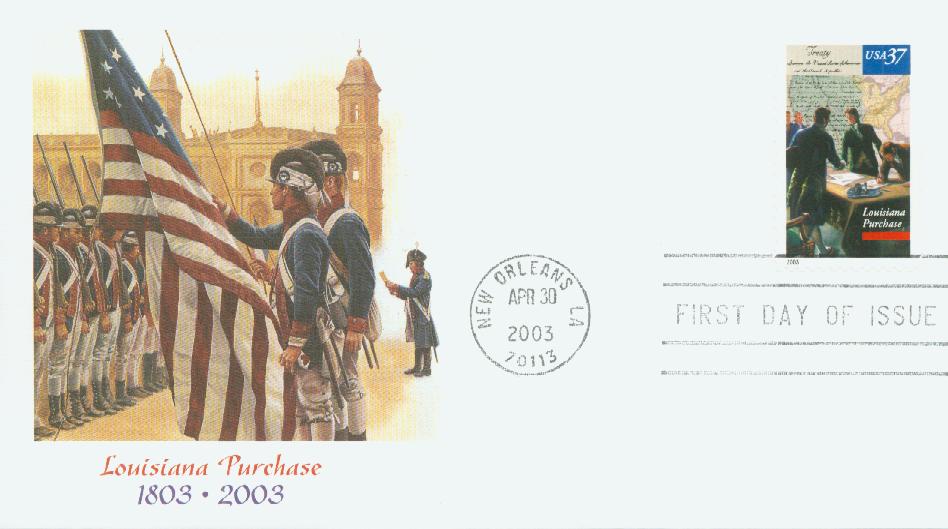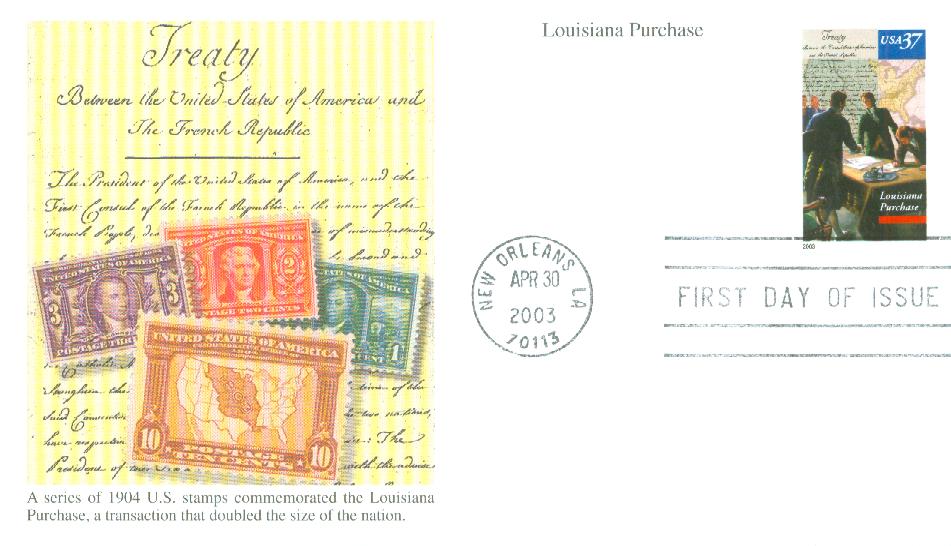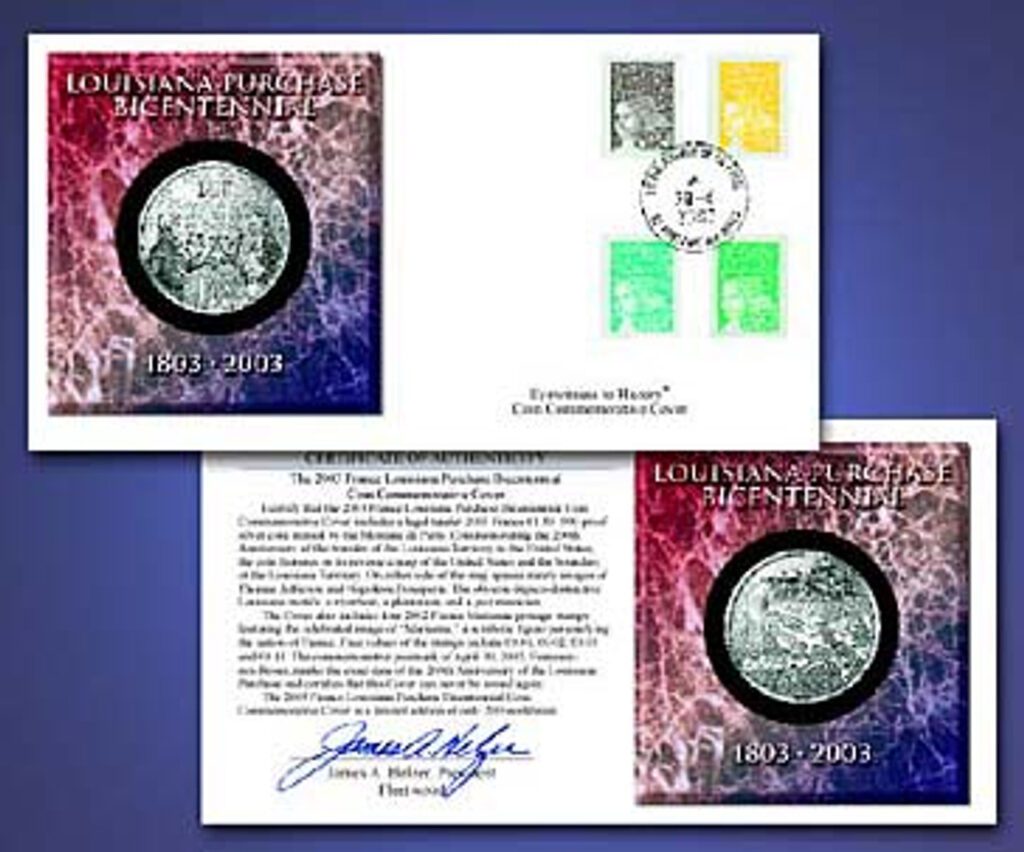On March 10, 1804, the US flag was raised over St. Louis, marking the completion of the Louisiana Purchase. This day, along with March 9, is known as Three Flags Day.
In the early 1800s, Napoleon Bonaparte sought to create a great French empire in the New World. The center of the empire was to be the nation of Hispaniola. Napoleon envisioned that the Mississippi Valley would be the trade center of the new empire, shipping food and supplies from America to Hispaniola.
At this time, Hispaniola was in the midst of a slave revolt. This revolt had to be put down before French control could be restored. In an attempt to end it, Napoleon sent a large army to Hispaniola. Although there were French victories on the battlefield, many soldiers died from disease. Because of these heavy losses, Napoleon was forced to abandon Hispaniola and, in turn, his dream of an empire in the New World.

With Hispaniola gone, Napoleon had little use for Louisiana. Additionally, war was imminent in Europe and he couldn’t spare troops to defend the territory. This caused Napoleon to offer the land for sale to the United States, which had expressed interest in New Orleans.
Commerce in the US depended heavily on waterways during the early 1800s. None was more important to US interests than the mighty Mississippi River and the port city of New Orleans. Fearful that the US might lose navigational rights along the Mississippi, President Thomas Jefferson sent James Monroe and Robert R. Livingston to Paris to negotiate the purchase of New Orleans and its immediate surrounding area. Jefferson also sent Pierre Samuel du Pont de Nemours, a French nobleman living in the United States. He had political connections in France, so Jefferson asked him to help with negotiations.
Monroe and Livingston were prepared to offer $10 million for the port city, but France offered the entire 530-million-acre area for $15 million. Concerned Napoleon would withdraw the offer at any time, the representatives agreed without consulting the president, and the treaty was signed on April 30, 1803.
The purchase was the American government’s largest financial transaction to date, and it doubled the size of the United States at a cost of less than 3¢ per acre. Control of the Mississippi River and the port of New Orleans provided a convenient method of transportation necessary for the development of the new region. The acquisition also distanced France from the young nation, removing the risk that the two like-minded countries would become enemies over conflicting interests.
In spite of the bargain price, the purchase caused controversy. President Jefferson himself questioned whether he had the authority under the US Constitution to acquire land. The issue was so divisive, a group of northerners considered forming a separate northern confederacy. When Napoleon signed the Louisiana Purchase, he said, “This accession of territory affirms forever the power of the United States.” America did grow into a world power, as he predicted.
While the agreement had been reached, the US was unable to immediately take possession of the land. Though Spain had ceded land to France in 1800, their treaty had been kept secret and Spain continued to administer the territory. The land still needed to be formally turned over to France. It would be nearly a year before this was completed, following a series of formal ceremonies.
The first came on November 30, 1803, when Spain transferred New Orleans to France. Then on December 20, New Orleans and the rest of Louisiana were transferred to the US. Finally, on March 9, 1804, the transfer began in St. Louis. The Spanish flag was lowered and the French flag hoisted. It would fly for 24 hours before being removed and replaced by the American flag. The event is often called Three Flags Day and it officially cleared the way for Lewis and Clark to begin their expedition westward.
| FREE printable This Day in History album pages Download a PDF of today’s article. Get a binder or other supplies to create your This Day in History album. |
Discover what else happened on This Day in History.







Fascinating story! Never knew the thing about the Three Flags Day. As the saying goes, you learn something new everyday.
History continues to amaze me. Thank you Mystic for another well written article. I look forward to your daily history lesson. Keep up the good work.
A small and not surprising point. No-one asked or consulted with the native population. of the vast area.
I grew up in the St. Louis area and many people that lived there did not understand or knew of three flag day although there were numerous signals around that made it obvious this was the jumping off place to the west and was important. Eventually, the arch completed in 1965 on the riverfront became the most obvious sign of this city being the gateway to the west.
It’s curious to me how the undesisive President Jefferson and those involved came to the conclusion it was ok Constitutionally to aquire the land,was it? Who were the other people of this new nation that wondered the same thing and how was this resolved?
Napoleon made an offer that the US couldn’t refuse. The Constitution doesn’t prohibit the acquisition of new lands. Good job by the American representatives.
Excellent article. The various power brokering and positioning exercises amongst the European empires in the 1700’s and 1800’s is fascinating.